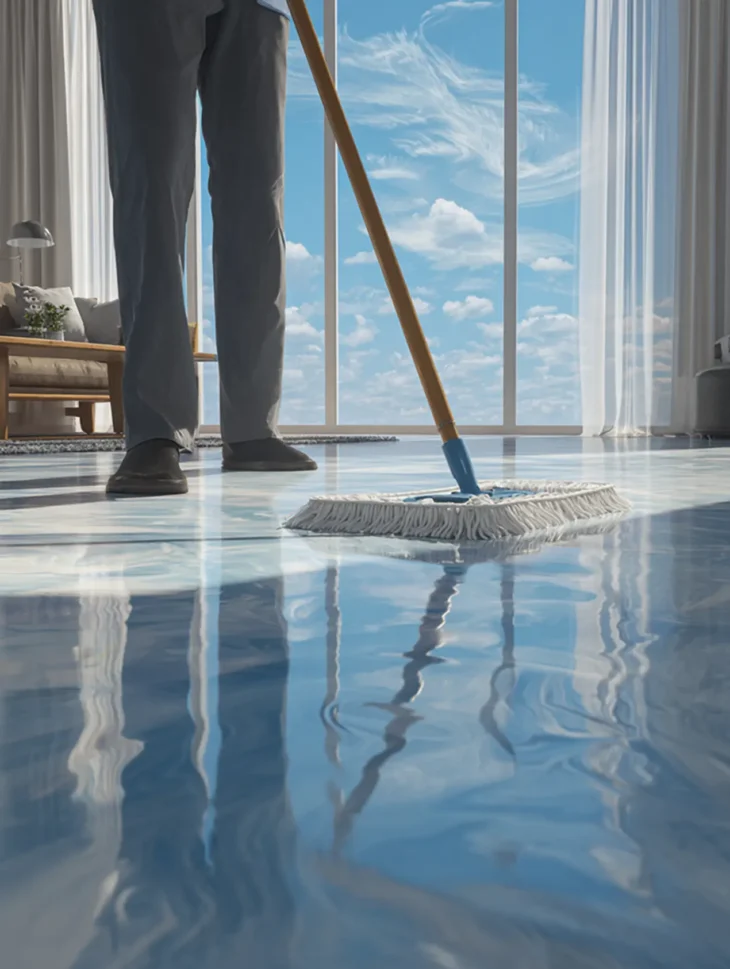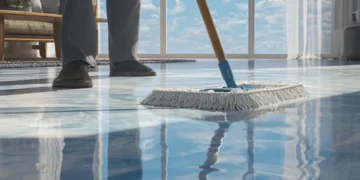
Your floors are the foundation of a healthy, comfortable home that directly influences indoor air quality and the overall feel of your living space. Each type of flooring comes with its own personality and care requirements, making it crucial to understand the right maintenance approach for what you have underfoot. Many homeowners discover that having the right floor cleaner makes all the difference in keeping surfaces spotless and safe while protecting their investment. This guide walks you through everything you need to know about maintaining every major flooring type effectively.
Understanding Your Flooring: Types and Their Unique Needs
Think of different flooring materials as having distinct personalities, each with specific needs to stay looking and performing their best. Hardwood floors bring natural warmth and beauty to your home, but they’re sensitive souls that need protection from moisture and scratches. Ceramic and porcelain tiles are the workhorses of the flooring world, built to last but requiring attention to those tricky grout lines where dirt loves to hide.
Laminate flooring gives you the wood look with more forgiveness when it comes to water, while vinyl offers incredible versatility and practically worry-free maintenance. Carpet adds comfort and warmth but needs regular deep cleaning to keep allergens at bay. Natural stone floors are stunning but particular, they demand pH-neutral products to prevent damage from acidic cleaners.
These unique characteristics matter more than you might think. Hardwood expands and contracts with humidity changes like a living thing, while tile surfaces can become breeding grounds for bacteria if grout isn’t properly maintained. When you understand these differences, you can give each floor exactly what it needs to stay beautiful and functional for years to come.
Essential Floor Maintenance Practices for Every Home
Building solid cleaning habits is like putting money in the bank, it prevents expensive problems down the road while keeping your floors looking their best. Start with daily basics: sweep or vacuum to catch debris before it can scratch surfaces, tackle spills immediately to prevent permanent stains, and use quality entry mats to stop dirt at the door.
Weekly routines should match your floor type. Hardwood responds well to gentle damp mopping with pH-neutral solutions, while tile can handle more intensive cleaning, including scrubbing those grout lines. Carpets need thorough weekly vacuuming with spot treatments as needed. Don’t forget about seasonal deep cleaning, it’s your chance to address accumulated wear and bring back that fresh appearance. Consider professional carpet cleaning annually and hardwood refinishing every few years.
This regular attention does more than keep things looking good. It plays a vital role in preventing allergen buildup, which is especially important if anyone in your household has sensitivities. Plus, consistent maintenance helps you spot potential problems early, like loose tiles or worn carpet spots, so you can address them before they become major headaches.
Choosing the Right Cleaning Tools and Products
Having the right tools makes floor care so much easier and more effective. Microfiber mops are game-changers for capturing dirt without scratching delicate surfaces. A good vacuum with appropriate attachments handles different floor types beautifully, while soft-bristled brushes make grout cleaning manageable. pH-neutral cleaning solutions are your safe bet for protecting floor finishes.
Here’s the golden rule: always match your cleaning products and tools to your specific floor type. Take time to read product labels, it’s a small step that prevents costly mistakes like using acidic cleaners on natural stone or soaking hardwood with too much water. Quality tools designed for your flooring type aren’t just more effective; they actually protect your surfaces while they clean.
Preventive Measures to Extend Floor Life
The best maintenance strategy is often preventing problems before they start. Well-placed entry mats are your first line of defense, catching dirt and moisture before they make it to your floors are all key to maintaining healthy indoor floors. A household shoe removal policy might seem like a small thing, but it makes a huge difference in reducing wear and tear.
Furniture pads prevent those heartbreaking scratches from chairs and tables, while area rugs in high-traffic zones help distribute wear more evenly. When spills happen, and they will, quick action prevents permanent staining and water damage. Keep appropriate cleaning supplies within easy reach, and learn to recognize which spills you can handle yourself versus those that need professional attention.
Safe and Sustainable Floor Care: Protecting Your Home and the Environment
You don’t have to choose between effective cleaning and protecting your family’s health. Eco-friendly alternatives deliver excellent results while reducing chemical exposure and environmental impact. Simple solutions like vinegar and water work beautifully for many floor types, while plant-based commercial cleaners offer convenience without harsh chemicals.
Consider indoor air quality during cleaning activities, and always dispose of cleaning supplies responsibly. Your floors can look amazing while keeping your home’s air clean and your environmental footprint light.
Troubleshooting: Solutions for Common Floor Care Problems
When floor problems arise, quick action often means the difference between a simple fix and an expensive repair. Stubborn stains usually respond well to targeted treatment with the right products, while pet accidents require enzymatic cleaners to truly eliminate odors. Water damage demands immediate attention, remove moisture quickly and don’t hesitate to call professionals for assessment.
Surface dullness might signal it’s time for refinishing or professional restoration on your road to maintaining healthy indoor floors. Learning when to tackle issues yourself versus calling in the experts protects both your flooring investment and your safety.
Finally, taking proper care of your floors isn’t just about appearances, it’s an investment in daily comfort and long-term property value. By understanding your specific flooring type, establishing the right maintenance routines, and addressing issues promptly, you’re creating a healthier home environment while protecting what’s likely one of your biggest investments. Take a moment to evaluate your current floor care practices and make improvements based on what you’ve learned here. For complex issues, don’t hesitate to consult professionals, sometimes expert help is exactly what your floors need to stay beautiful for years to come.



















